Marisa Merz

© Fondazione Merz | Marisa Merz, Untitled, n.d. I Ph. Luca Vianello and Silvia Mangosio
Dal 23 January 2024 al 23 March 2024
Napoli
Luogo: Thomas Dane Gallery
Indirizzo: Via Francesco Crispi 69
Orari: Tuesday to Friday 11-1:30 and 2:30-7, Saturday 12-7
Telefono per informazioni: +39 081 1892 0545
E-Mail info: naples@thomasdanegallery.com
Sito ufficiale: http://www.thomasdanegallery.com
In a sense, one could say that the work of Marisa Merz is haunted by ghosts. These are not the dark phantasms of Gothic nightmares but rather the shimmering remnants of the presence of objects in the palimpsest of space and time. They are paradoxically immaterial yet completely present (…)
Douglas Fogle
There seems to be no better union than the work of Marisa Merz and the city of Naples. It is as if her byzantine realm of elemental materials - clay, copper, gold, bronze, wax… - had been created to inhabit and settle into the meandering streets and the corner shrines of the great city. Or is it maybe that Naples itself was somehow built and rebuilt to host Merz’s work? From the black volcanic rock slabs that line its streets, to the yellow, porous tufo - a stone formed from the Phlegraean Fields, a large volcanic caldera to the west of Naples that makes most of the buildings here - the Neapolitans used what was immediately at their feet to construct their city. Much in the same way Merz reached for what was immediately around her; transforming “humble” or “everyday” materials and objects into rituals and talismans.
Thomas Dane Gallery is honoured to present a solo show of Merz, seeing her return to Naples 17 years after her first exhibition in the city at the Madre Museum in 2007.
Within the Arte Povera movement that emerged from a post-industrialised and tumultuous Italy in the 1960s, Marisa Merz holds a very singular space. As the only woman in the avant-garde group, she maintained her unique and enduring presence through circumspection and delicacy, with an oeuvre that kept rearranging genres, expectations and interpretation.
Often undated, untitled and unexplained, her work remains seductively private, familiarly domestic, but bewitchingly universal. Her objects are at their most content when they sit on the floor, on a chair or in a corner… Her actions, sculptures, drawings and installations are, literally and metaphorically, more at ease in the kitchens, the vestibules and the alcoves, than the grand halls and walls of adorned galleries.
However inscrutable and mysterious, Merz’s work is deeply rooted in tradition and classicism: finding its ancestral origins in Byzantine icon paintings in the austerity of the Trecento, in the tenderness of Fra Angelico in the transmutations of Medardo Rosso, and even down to the studio methods of Brancusi and the angular dynamism of the Futurists.
A striking sculpture, for instance, makes an extraordinary reappearance in the exhibition: an elongated triangle of paraffin lying casually on a carpet with copper strings running through its axis. Part-wedge, part-vessel, or perhaps some primeval musical instrument, that Richard Flood once melodiously described as “resembling an Apollonian merger of zither and koto”.
Such is the work of Merz, broaching the myths and idioms of antiquity and neolithic Mediterranean, travelling through space, time and disciplines with equal ease and a mystifying wink.
In her hands, inanimate clay and paper metamorphose into quasi-animistic objects, forming an opus of icons, ex-votos, and memento mori in which the recurring motif of the human head is moulded and carved into unfired clay, or painted in gold. Their arching necks, slightly tilting the shadow of a stoic face, are an echo of the ever-present feeling of being watched back by the sculptures, frescos and shrines that adorn the streets of Naples. Haunting tributes to what once was, or what will be, Merz conjures these images of figures like phantoms, and like the city itself, her palimpsestic and pagan universe can never lose its rooting in history and Christianity.
Marisa Merz (1926-2019), lived and worked in Turin, Italy. Among the institutions that have dedicated solo exhibitions to her work are Lille Métropole Musée d’art modern, Villeneuve-d'Ascq, France (forthcoming), The Met Breuer, New York NY, The Hammer Museum, Los Angeles CA, Centre Internationale d’art et du Paysage, ÎIe de Vassivière, France; Serpentine Gallery, London; Museo d'Arte Contemporanea Donnaregina, Naples, Italy; Stedelijk Museum, Amsterdam; Kunstmuseum Winterthur, Switzerland; and the Centre Georges Pompidou, Paris. Merz’s work has been included in countless group exhibitions all over the world, including: Kunstmuseum Liechtenstein; CCS Bard/Hessel Museum of Art, New York NY; Tate Modern, London; and the Hirshhorn Museum, Washington DC. Merz has participated five times in the Venice Biennale, and in her fifth showing in 2013, received the Golden Lion for Lifetime Achievement.
Douglas Fogle
There seems to be no better union than the work of Marisa Merz and the city of Naples. It is as if her byzantine realm of elemental materials - clay, copper, gold, bronze, wax… - had been created to inhabit and settle into the meandering streets and the corner shrines of the great city. Or is it maybe that Naples itself was somehow built and rebuilt to host Merz’s work? From the black volcanic rock slabs that line its streets, to the yellow, porous tufo - a stone formed from the Phlegraean Fields, a large volcanic caldera to the west of Naples that makes most of the buildings here - the Neapolitans used what was immediately at their feet to construct their city. Much in the same way Merz reached for what was immediately around her; transforming “humble” or “everyday” materials and objects into rituals and talismans.
Thomas Dane Gallery is honoured to present a solo show of Merz, seeing her return to Naples 17 years after her first exhibition in the city at the Madre Museum in 2007.
Within the Arte Povera movement that emerged from a post-industrialised and tumultuous Italy in the 1960s, Marisa Merz holds a very singular space. As the only woman in the avant-garde group, she maintained her unique and enduring presence through circumspection and delicacy, with an oeuvre that kept rearranging genres, expectations and interpretation.
Often undated, untitled and unexplained, her work remains seductively private, familiarly domestic, but bewitchingly universal. Her objects are at their most content when they sit on the floor, on a chair or in a corner… Her actions, sculptures, drawings and installations are, literally and metaphorically, more at ease in the kitchens, the vestibules and the alcoves, than the grand halls and walls of adorned galleries.
However inscrutable and mysterious, Merz’s work is deeply rooted in tradition and classicism: finding its ancestral origins in Byzantine icon paintings in the austerity of the Trecento, in the tenderness of Fra Angelico in the transmutations of Medardo Rosso, and even down to the studio methods of Brancusi and the angular dynamism of the Futurists.
A striking sculpture, for instance, makes an extraordinary reappearance in the exhibition: an elongated triangle of paraffin lying casually on a carpet with copper strings running through its axis. Part-wedge, part-vessel, or perhaps some primeval musical instrument, that Richard Flood once melodiously described as “resembling an Apollonian merger of zither and koto”.
Such is the work of Merz, broaching the myths and idioms of antiquity and neolithic Mediterranean, travelling through space, time and disciplines with equal ease and a mystifying wink.
In her hands, inanimate clay and paper metamorphose into quasi-animistic objects, forming an opus of icons, ex-votos, and memento mori in which the recurring motif of the human head is moulded and carved into unfired clay, or painted in gold. Their arching necks, slightly tilting the shadow of a stoic face, are an echo of the ever-present feeling of being watched back by the sculptures, frescos and shrines that adorn the streets of Naples. Haunting tributes to what once was, or what will be, Merz conjures these images of figures like phantoms, and like the city itself, her palimpsestic and pagan universe can never lose its rooting in history and Christianity.
Marisa Merz (1926-2019), lived and worked in Turin, Italy. Among the institutions that have dedicated solo exhibitions to her work are Lille Métropole Musée d’art modern, Villeneuve-d'Ascq, France (forthcoming), The Met Breuer, New York NY, The Hammer Museum, Los Angeles CA, Centre Internationale d’art et du Paysage, ÎIe de Vassivière, France; Serpentine Gallery, London; Museo d'Arte Contemporanea Donnaregina, Naples, Italy; Stedelijk Museum, Amsterdam; Kunstmuseum Winterthur, Switzerland; and the Centre Georges Pompidou, Paris. Merz’s work has been included in countless group exhibitions all over the world, including: Kunstmuseum Liechtenstein; CCS Bard/Hessel Museum of Art, New York NY; Tate Modern, London; and the Hirshhorn Museum, Washington DC. Merz has participated five times in the Venice Biennale, and in her fifth showing in 2013, received the Golden Lion for Lifetime Achievement.
SCARICA IL COMUNICATO IN PDF
COMMENTI

-
 Dal 20 December 2025 al 20 April 2026
Caserta | Reggia di Caserta
Dal 20 December 2025 al 20 April 2026
Caserta | Reggia di Caserta
Regine: trame di cultura e diplomazia tra Napoli e l’Europa
-
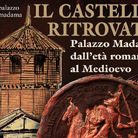 Dal 19 December 2025 al 23 March 2026
Torino | Palazzo Madama - Museo Civico d’Arte Antica
Dal 19 December 2025 al 23 March 2026
Torino | Palazzo Madama - Museo Civico d’Arte Antica
Il castello ritrovato. Palazzo Madama dall’età romana al medioevo
-
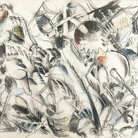 Dal 17 December 2025 al 19 January 2026
Roma | Palazzo della Cancelleria
Dal 17 December 2025 al 19 January 2026
Roma | Palazzo della Cancelleria
De Humana Mensura di Linda Karshan
-
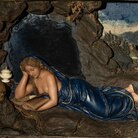 Dal 18 December 2025 al 12 April 2026
Firenze | Gallerie degli Uffizi
Dal 18 December 2025 al 12 April 2026
Firenze | Gallerie degli Uffizi
Cera una volta. Sculture dalle collezioni medicee
-
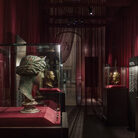 Dal 11 December 2025 al 9 April 2026
Firenze | Museo Archeologico Nazionale di Firenze
Dal 11 December 2025 al 9 April 2026
Firenze | Museo Archeologico Nazionale di Firenze
Icone di Potere e Bellezza
-
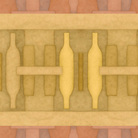 Dal 11 December 2025 al 11 January 2026
Roma | Palazzo Esposizioni Roma
Dal 11 December 2025 al 11 January 2026
Roma | Palazzo Esposizioni Roma
Giorgio Morandi nella Collezione Eni. Un viaggio attraverso la storia culturale del cane a sei zampe e l’eredità di Enrico Mattei


